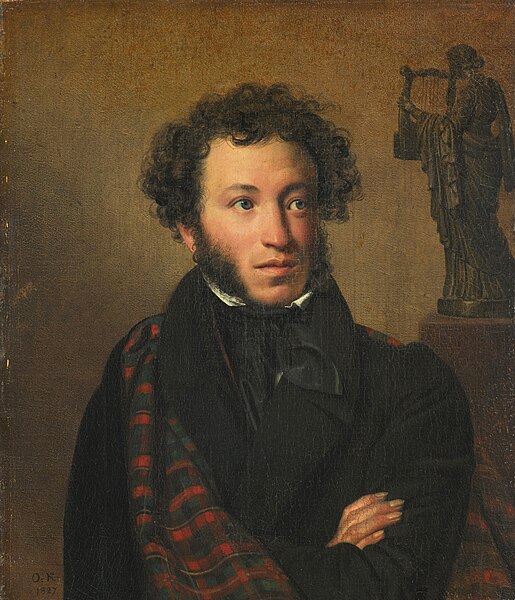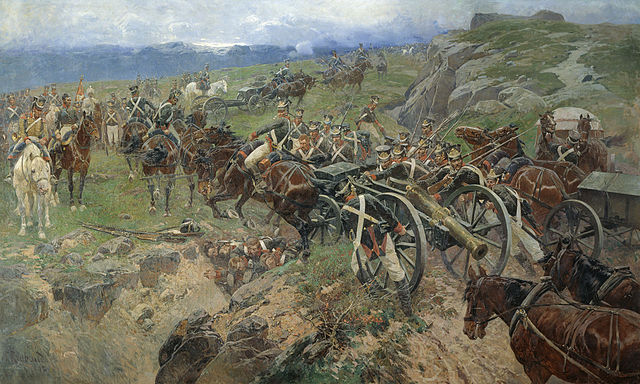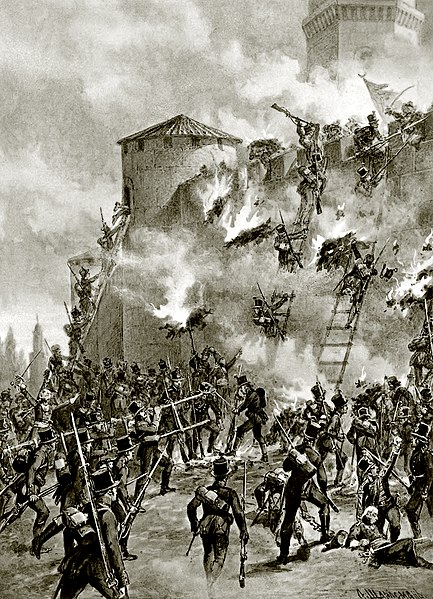Prince Pavel Dmitriyevich Tsitsianov, also known as Pavle Dimitris dze Tsitsishvili, was a Georgian nobleman and a prominent general of the Imperial Russian Army. Serving in the Russo-Persian War of 1804–1813, from 1802 to 1806 he also served as the Russian Commander-in-chief in the Caucasus. He also played a major role in the Circassian genocide, being one of the first Russian generals to start using genocidal methods against civilians in the Russo-Circassian War. He referred to the indigenous Circassians as "untrustworthy swine" to "show how insignificant they are compared to Russia."
Portrait of Tsitsianov
Pavel's younger brother Mikhail
Tsitsianov's fiery character was used as an allegory of Russian Imperial power in Pushkin's romantic poem Captive of the Caucasus
Russo-Persian War (1804–1813)
The Russo-Persian War of 1804–1813 was one of the many wars between the Persian Empire and Imperial Russia, and, like many of their other conflicts, began as a territorial dispute. The new Persian king, Fath Ali Shah Qajar, wanted to consolidate the northernmost reaches of his kingdom—modern-day Georgia—which had been annexed by Tsar Paul I several years after the Russo-Persian War of 1796. Like his Persian counterpart, the Tsar Alexander I was also new to the throne and equally determined to control the disputed territories.
This painting by Franz Roubaud illustrates an episode near the Askerna river where the Russians managed to repel attacks by a larger Persian army for two weeks. They made a "living bridge", so that two cannons could be transported over their bodies.
The siege of Ganja Fortress in 1804 during the Russo-Persian War (1804-1813) by the Russian forces under leadership of general Pavel Tsitsianov.
The Iranian Envoy Mirza Mohammad-Reza Qazvini meeting with Napoleon I at the Finckenstein Palace, 27 April 1807, to sign the Treaty of Finckenstein.
Askar Khan Afshar received by Napoleon I at Saint Cloud 4 September 1808 by Benjamin Zix







